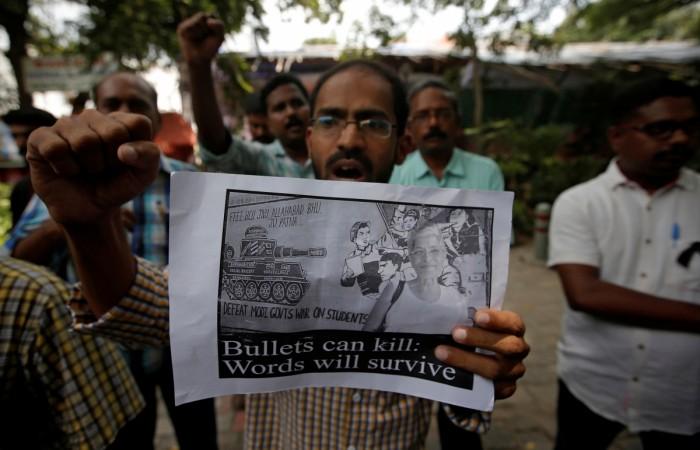
Two reports in the space of hours were damning of the press in India and the celebrated concept of media freedom. In one incident, an investigative journalist who carried out a sting operation against those in power died a bloody death on the road. In the other, a sting operation unraveled the mask of media objectivity in dramatic fashion.
Both these reports come at a time when public anger is burning over the biggest bane the country is facing -- corruption. And both these reports underline the fact that this country can't be claimed by its people any time in the near future.
The killing of journalist Sandeep Sharma in Madhya Pradesh proves that the wage for a fight against corruption is death. Journalists and RTI activists have been killed in India before as well, and India has just burnished its foul reputation as a very risky place for those who expose corruption and political malpractices. The country is, in fact, in dubious company in this matter, despite being a vibrant democracy.
A Transparency International investigation has documented the hazards of journalists, RTI activists and officials who expose graft in the country. The rate at which journalists, activists and whistleblowers are killed in the country is alarming. "Philippines, India and the Maldives are among the worst regional offenders in this respect. These countries score high for corruption and have fewer press freedoms and higher numbers of journalist deaths," the report says
Reporters without Borders says India is the deadliest country in Asia for journalists, ahead of both Pakistan and Afghanistan. In 2015, nine journalists were killed in India, ranking the country just below Iraq and Syria in the total count. RSF noted that there has been a surge of violence against Indian scribes who dared to cover organized crime and its links with politicians since 2015. According to data compiled by the Committee to Protect Journalists (CPJ, at least 15 journalists were killed in India in the last six years.
Journalist Sandeep Kothari from Madhya Pradesh was killed in 2015 after he exposed the sand mafia. His killers set him on fire in a farmhouse in Nagpur after he refused to pull out of an illegal sand mining case. RSF and Indian journalist community have been pressing the government for ensuring the safety or reporters, but the work hazard has only worsened.
Lying through their teeth
Sharma, the slain journalist, had feared for his life but he wasn't given any protection. He had first-hand evidence of a senior police officer's complicity with local sand mining mafia bosses. In the end it's damn easy to snuff out a life to keep the tracks of the corrupt eternally covered.
The blood-curdling way in which he was killed will instill raw fear into the minds of anyone chasing the whiff of corruption. With each killing re-inforcing the idea that no story is worth your life, the stories that need to be told will remain untold. That just means Indians will have to wait longer to reclaim their country.
On the other side, Aniruddha Bahal's Cobrapost revealed another obvious side of Indian press -- its willingness to bend the rules of the game and be the purveyors of malicious fake news. The sting operation by Cobrapost revealed how eager media bosses were to accept the offer of money in lieu of lying through their teeth.
By naming the sting as 'Operation 136', the author of Bunker 13 is alluding to India's rank in the world press freedom index. According to the RSF, India had the lowly place of 136 in 2017.
The irony, however, is that while upright reporters die in the line of duty, the corrupt have oodles of 'press freedom' to engage in professional prostitution.
(Views expressed in the article are the author's own)








![Nothing to open its first global flagship store in THIS Indian city [details]](https://data1.ibtimes.co.in/en/full/827007/nothing-open-its-first-global-flagship-store-this-indian-city-details.png?w=220&h=138)



